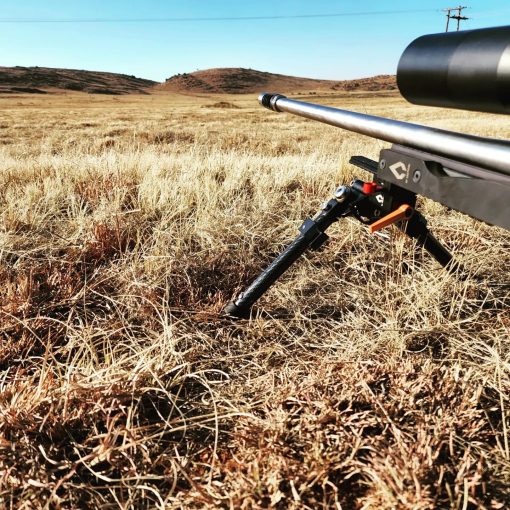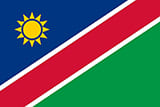Uncategorized
Empowering Local Manufacturing to Overcome Supply Chain Challenges in the South African and Namibian Firearms Market
Empowering Local Manufacturing to Overcome Supply Chain Challenges in the South African and Namibian Firearms Market
Introduction: In recent years, the demand for firearms and related products in South Africa and Namibia has surged, creating a significant strain on both retailers and buyers due to the widening gap between demand and available products. Despite this noticeable increase in demand, stock volumes have remained low, largely due to various international challenges, presenting substantial hurdles for the industry. In this discourse, we endeavor to explore the underlying factors contributing to the scarcity of firearms-related products and advocate for a solution centered around fortifying local manufacturers. Through strategic investments in domestic production, South Africa and Namibia can effectively address supply chain challenges, spur economic growth, and enhance the diversity of product availability for the public.
Understanding the Surge in Demand: The rise in demand for firearms and related products can be attributed to multifaceted factors, including heightened concerns over personal safety amidst alarming crime rates, a burgeoning interest in recreational shooting sports like PRS/NRL, and a growing enthusiasm for hunting. Particularly, South Africa has witnessed a surge in violent crime rates, compelling individuals to seek firearms and associated accessories for self-defense. Similarly, the expansive wilderness areas and abundant wildlife in Namibia have fueled an uptick in hunting activities, further propelling the demand for firearms and ammunition.
Impact of Global Conflicts on Ammunition Supply: The surge in demand for firearms and related products in South Africa and Namibia has been compounded by ongoing conflicts and geopolitical tensions across the globe. Notably, the global supply chain for ammunition has been significantly disrupted by major conflicts such as those in Ukraine and Syria. These conflicts have not only disrupted production and distribution but have also led to export restrictions imposed by countries involved in the conflicts. For instance, the conflict in Ukraine, which commenced in 2014, has had far-reaching implications for the global ammunition market. As a major ammunition producer, Ukraine’s conflict has disrupted production facilities and supply chains, resulting in shortages globally. Export restrictions imposed by Ukraine and its allies have further constricted the flow of ammunition to countries like South Africa and Namibia, exacerbating the shortage of stock and driving up prices. Similarly, the protracted war in Syria has also had profound consequences for the global ammunition market. Once a significant producer of small arms ammunition, Syria’s conflict has decimated the country’s industrial infrastructure, leading to the collapse of its ammunition production capacity. As a result, countries reliant on Syrian ammunition have been compelled to seek alternative sources, further straining the global supply chain.
Challenges Faced by Retailers and Buyers: The scarcity of stock has left retailers grappling with missed sales opportunities and dissatisfied customers. Many businesses find themselves compelled to turn away potential buyers or impose stringent purchase limits, exacerbating consumer frustration. This predicament not only undermines revenue but also tarnishes their reputation within the community. Furthermore, retailers are increasingly burdened by the necessity to source products from overseas suppliers, escalating costs and extending restocking lead times, thereby jeopardizing their financial viability amidst rising operational expenses. Moreover, the current geopolitical landscape characterized by ongoing conflicts and wars has compounded challenges faced by retailers and buyers alike. The ammunition shortage, exacerbated by increased demand from military forces engaged in conflicts, has resulted in even scarcer supplies for civilian markets. This heightened demand, coupled with export restrictions imposed by countries involved in conflicts, has severely restricted ammunition availability for civilian use, exacerbating strain on beleaguered supply chains.
Empowering Local Manufacturers: To alleviate strain on the supply chain, supporting local manufacturers of firearms-related products emerges as a promising solution. By investing in domestic production capabilities, South Africa and Namibia can reduce dependence on imports, ensuring a more resilient and sustainable industry. Local manufacturing offers several distinct advantages, including enhanced supply chain resilience, job creation, regulatory compliance, and customization and innovation.
Benefits for the Economy and Consumers: Transitioning towards domestic production of firearms-related products offers numerous benefits, including economic growth, diversification of supply, strengthened national security, enhanced product availability and affordability, and empowerment of local communities.
Addressing Cost Implications and Global Pressures: In addition to supply chain strain, it is crucial to address cost implications for buyers and wholesalers. Importing firearms-related products incurs significant expenses, contributing to higher retail prices and impacting consumer affordability. Furthermore, global pressures on export and import, including trade disputes and regulatory changes, underscore the importance of diversifying sources of supply and promoting local manufacturing to enhance supply chain resilience.
Local Manufacturers Leading the Way: Fortunately, both South Africa and Namibia boast successful local manufacturers gaining traction in the market. Companies like Sustac, APM, Axe, Balixtix, and ARC Annealers offer a range of high-quality firearm accessories and equipment, providing consumers with diverse options while alleviating strain on supply chains. With these homegrown manufacturers leading the way, both countries are well-positioned to foster a thriving domestic industry and ensure a more secure and sustainable future for the firearms market.



